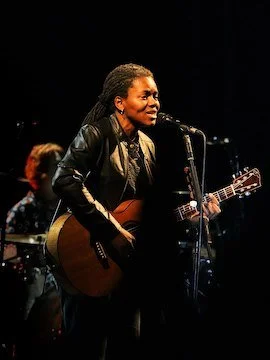Who Needs a Fast Car?
Image sourced from WikiMedia
Who Needs a Fast Car?
You got a fast car, and I want a ticket to anywhere.
“Fast Car,” a song written by Tracy Chapman in 1988 and rereleased this year as a cover by country star Luke Combs, won the 2023 Song of the Year at the Country Music Association Awards. I loved this song when it debuted 35 years ago. I found it to be a compelling story of a young woman trying to escape the complex, reinforcing factors that create urban poverty. Combs’s version, which turns Chapman’s folk-rock version into a twangy, country edition, shows that I should also think about this song as a rural anthem. This song’s renewed popularity demonstrates how poverty has changed in America.
Any place is better, starting from zero, got nothing to lose.
One of my favorite studies of the past five years looks at changes in rural versus urban health outcomes since the 1970s. I will summarize the big points, but it’s worth clicking on the link and looking at the graphs.
First, some good news from the study: mortality in both urban and rural counties has consistently improved during the 45-year time period of the study (1970-2016). We have become a progressively healthier country.
But the news is more positive in urban counties than in rural counties. The study, Figure 1, shows that in 1988—the year “Fast Car” was first released— rural and urban mortality started to diverge. Rural mortality rates begin to improve less quickly than urban mortality rates. By 2016, the accumulated difference over 25+ years meant that, in rural counties, well over 100 extra people died per 100,000 residents each year. Rural counties have not shared as fully in the health improvements that urban counties have seen.
Won't have to drive too far, just across the border and into the city
The study tries to identify why these mortality curves might have diverged by correlating different factors with county-level mortality rates (Figures 2 and 3). The percentage of residents who are Black jumps out as important. Counties with higher percentages of Black residents had higher mortality rates over the entire length of the study. This is the impact of systemic racism.
Fortunately, this factor, which had the highest correlation with mortality from 1980-2008, has become less dominant over time. Think about this in the context of the song “Fast Car” by Tracy Chapman, a Black woman, now has a white peer, Luke Combs, singing about the desperation of poverty. In fact, by the end of the study in 2015, being from a rural county was a greater predictor of mortality than being Black. Something has changed.
We'll move out of the shelter, buy a bigger house, live in the suburbs.
This study gives us some clues about what might be happening. Low educational status, defined as the percentage of people without a college degree, has replaced race as the factor with the worst correlation with mortality. Across the entire 45-year length of the study, ‘low educational status’ and ‘the percentage of people in poverty’ are consistent drivers of mortality.
The study's authors then combined some of these factors to get to the root of the problem. The study shows that the big change driving the divergence in urban-rural mortality is not just being rural but being both rural and poor (Figure 3). From 1970-1994, living in a rural and poor county did not increase the risk of mortality at all. But, in 1995, the mortality risk in these same counties skyrocketed by 30-40% and continued at that higher level for the remaining 20 years of the study.
And I-- had a feeling that I belonged,
I-- had a feeling I could be someone, be someone, be someone
The question is, can we fix the gap between rural and urban health outcomes? I am a doctor who dabbles in health policy, not an economist or an expert in overall policy, but clearly, many rural communities have fallen behind since the mid-1990s. While our anti-poverty efforts have succeeded in many cities, rural communities have not shared that success.
The challenges facing rural hospitals are emblematic of these problems. Most of these facilities are under financial strain because they cannot realize the economies of scale of their larger, urban counterparts. Most of the hospital closures of the past decade have been rural hospitals. These closures do not just impact patients; rural hospitals are often the largest employers in many rural communities, and when a rural hospital closes, it has an impact across the community: per-capita income for the entire community goes down by $700, and the unemployment rate goes up by 1.6%. A dying hospital signifies a dying community. A similar story could be told about the community impact of factory closures or maybe, corporate farm ownership.
The overarching point is that rural communities are struggling. Our urban communities had similar struggles 35 years ago and benefitted from economic redevelopment, leading to far better health outcomes than their rural counterparts. Tracy Chapman showed us that urban poverty is complex. Luke Combs is telling us the same thing about rural poverty. We need to find our way out.
You got a fast car, is it fast enough, so you can fly away?
You still gotta make a decision--leave tonight, or live and die this way.
If you enjoyed reading this, subscribe at the bottom of the page. We'd also love it if you shared with a friend.
This writing may not be used for generative artificial intelligence without express written consent of the author. Image created by the author using Midjourney.
